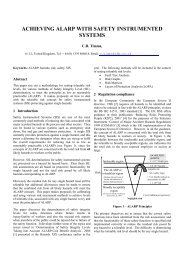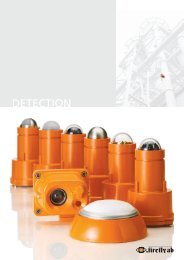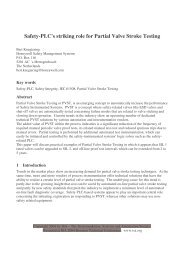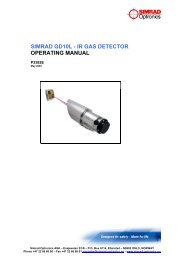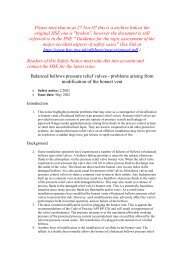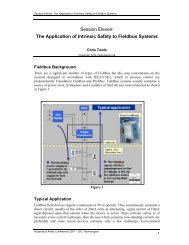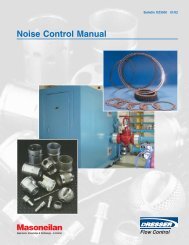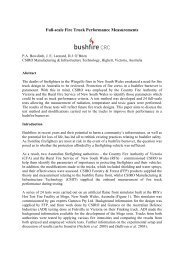Fire Safety Cables - ICEWeb
Fire Safety Cables - ICEWeb
Fire Safety Cables - ICEWeb
You also want an ePaper? Increase the reach of your titles
YUMPU automatically turns print PDFs into web optimized ePapers that Google loves.
conditions. Internal cabling favours PVC instead of polythenes and rubbers because unlikethese other materials they will quickly extinguish themselves once the source of fire isremoved or extinguished. Unfortunately, the halogens in PVC that exhibit this propertyproduce corrosive by products such as hydrochloric acid that is fatal both to humans andsensitive electrical equipment as found in computers for example. Even quite small fires canproduce enough acidic fall-out to destroy electronic equipment in buildings.After 5-7 minutes opaque smoke from an LSOH-FR cable will cause a peak 15%deterioration in light transmission settling to around 5% compared to a 90% deteriorationover an extended period for PVC sheathed cable.The majority of standard building cable used in the UK - even where LSOH-FR types areinstalled - will lose their functionality in a fire very quickly. That means that even if the cableposes no threat or hazard to people or building systems they will cease to provide a circuitquite quickly. Therefore, emergency systems such as public address, lighting, heat and smokeextraction and special lifts for fire-fighters need to be protected to ensure they will continueto function for a period of time during a fire.The fire resisting property of cable is measured in the UK by British Standard BS6387. Thistakes a 600mm length of cable and subjects it to a flame of 950°C for 3 hours while carrying3 amps of current. The specification also emulates fire conditions by subjecting the burningsample to water spray and mechanical shock (categories C, W and Z respectively). A furtherspecification - BS7629 - combines this fire survivability with low smoke and toxicityemission. Similar tests exist in Europe, such as IEC 60331 that concentrate on fireperformance only.Traditionally, fire-resisting cables such as MICC (mineral insulated, copper clad) have beenused to provide robust links in fire protection systems. Often described as 'fire survival'cables they utilise mineral-based insulation and copper tube technology. Although suchcables are of a high quality and robust, they are more difficult to install than alternatives.Several years ago, a 'soft skin' approach to fire-resistant cables was introduced. Such cablesare more akin to those usually installed by electrical contractors. They use thermoplasticmaterials and fire resisting tapes, rather than copper tube technology. Clearly these cablesoffer a more flexible design and are easier to install. They do not require such highly skilledtechnicians to install them since the required installation techniques are little different fromthose employed on lighting circuits.Both solutions have their merits. The consultant or fire engineer has to weigh up therequirements of each specific installation, balancing the need for effective safety criticalcircuits (that will facilitate evacuation and property protection) against the available budget.A further issue relates to the way in which the standard tests the cable. At present, only powertransmission performance is assessed. This needs to be amended to address the datatransmission performance. This is all-important for modern addressable fire detection andalarm systems.




